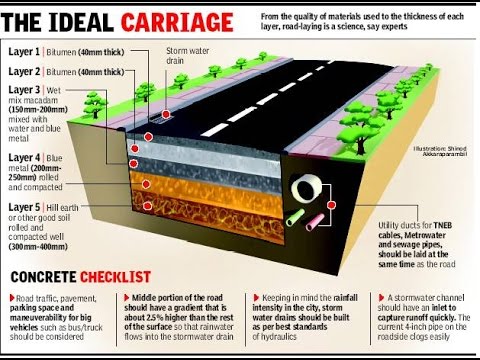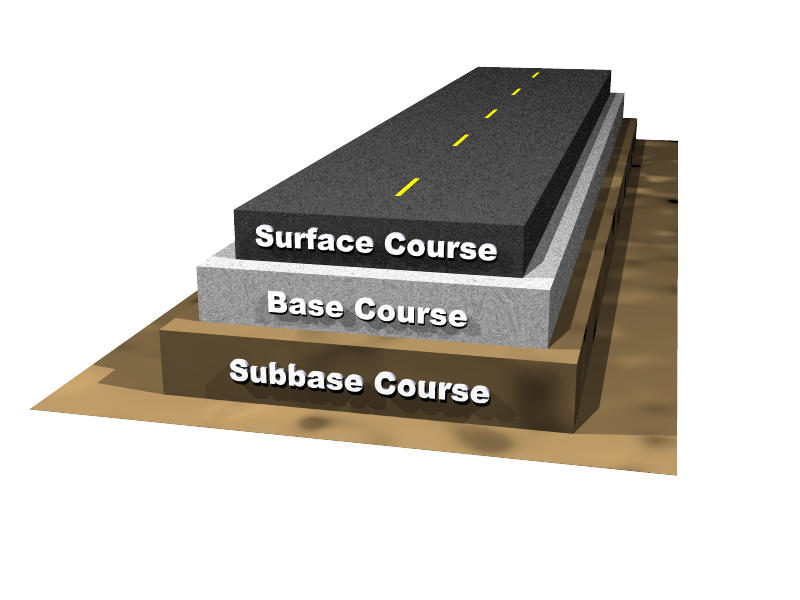Processes Involved in Road Construction in India 2023: Understanding Road Types, Differences, and Factors Influencing Construction
Introduction:
Road construction in India is critical to the country's infrastructure development and economic prosperity. Road construction entails multiple critical processes, from planning and design through execution and maintenance. In this article, we will look at the many procedures involved in road construction, as well as different types of roads such as tarmac, bitumen, and asphalt, their differences, and the factors that will influence road development in India in 2023.
1. Processes Involved in Road Construction:
a) Planning and Design:
Road construction begins with careful planning and design, taking into account elements such as traffic volume, terrain, environmental impact, and future expansion needs. Engineers and urban planners analyse data and design full road plans, including alignments, intersections, and drainage systems.
b) Site Preparation:
The following phase is to clear the construction site, remove any obstructions, and prepare the subgrade. Excavation and levelling are done to ensure a stable road foundation.
c) Base Course Construction:
The base course is made of various materials, such as crushed stone or gravel, and it provides the road with stability and load-bearing capacity. This layer aids in the even distribution of traffic loads and prevents subgrade deformation.
d) Surface Course Construction:
The visible layer of the road is the surface course, which is meant to produce a smooth and durable driving surface. Different types of road surfaces are employed, including tarmac, bitumen, and asphalt, which we shall explore in detail in the following section.
e) Drainage and Signage:
f) Quality Control and Maintenance:
Quality control techniques, such as material testing and compaction, are critical to ensuring the road's lifetime and safety. Regular maintenance, such as pothole repair and resurfacing, is required to keep the road in good shape.
2. Types of Roads: Tarmac, Bitumen, and Asphalt:
a)Tarmac:
Tarmac is a road surface composed of compacted stones and tar. It provides a smooth and long-lasting driving surface that can sustain high traffic. Tarmac roads are popular in India due to their low cost and ease of construction.
b) Bitumen:
Bitumen roads, commonly known as tarmac or flexible pavement, are made up of layers of crushed stone aggregates that are held together with bitumen. Bitumen is adaptable, allowing the road to adjust to temperature fluctuations and tolerate severe loads. It is commonly utilised in India because to its low cost and durability.
c) Asphalt:
Asphalt roads are made up of aggregates, bitumen, and sand. The asphalt mixture provides a smooth driving surface as well as outstanding deformation and cracking resistance. Because of their durability and capacity to handle enormous loads, asphalt roads are widely employed in high-traffic locations.
Asphalt roads, concrete roads, cement roads, bitumen roads, and tarmac roads are some of the most popular types of roads in India. Asphalt roads are created by combining asphalt with aggregate, resulting in a smooth and durable surface. Concrete roads are built with cement, sand, and aggregate to provide strength and lifespan. Cement is used as the major binding ingredient in cement roadways. Bitumen roads are constructed with a bituminous binder mixed with gravel, providing flexibility and resistance to water damage. Tarmac roads, which are frequently used for airport runways, are made of asphalt or concrete surfaces that are specifically intended for high traffic and aircraft operations.
3. Factors Influencing Road Construction:
a)Traffic Volume:
b) Climate and Weather Conditions:
c) Soil Conditions:
To reduce their ecological effect, road construction projects must follow environmental rules. Measures such as effective waste management, the preservation of natural habitats, and the reduction of air and water pollution are all critical factors.
e) Budgetary Constraints:
Available funds and budgetary constraints play a key effect in road construction decisions. It is critical to balance cost-effectiveness with desired road quality and durability.
Conclusion:
Road construction in India requires careful planning, design, and execution, taking into account elements such as traffic volume, climate, soil conditions, and budgetary restraints. Road surfaces such as tarmac, bitumen, and asphalt have varied levels of durability and economic effectiveness. While tarmac is less expensive, bitumen and asphalt are more durable, with asphalt being especially ideal for high-traffic areas. India can continue to develop resilient road infrastructure, facilitating smoother transit and supporting economic growth, by taking these aspects into account and adopting proper construction procedures.
Dear readers I appreciate you taking the time to go through my blog. Your participation and encouragement are greatly appreciated by me. I appreciate the chance to discuss my ideas with you. Keep checking back for more intriguing material soon!











Comments
Post a Comment